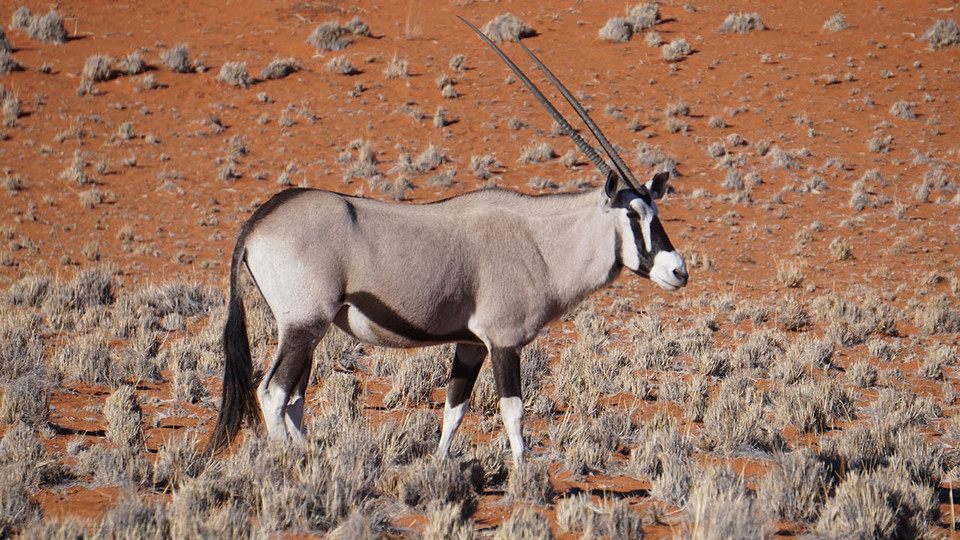· 3 min read
Great Plains Research focuses on ecotourism in Great Plains, Namibia

Ecotourism continues to build momentum in the United States, especially in the Great Plains, but it’s not a new idea for the African country of Namibia. Ecotourism has transformed this nation by combining environmental stewardship and conservation with the tourism industry, leading to a growing economic future for people living on the land.
In 2016, Katie Nieland, assistant director of the Center for Great Plains Studies, along with Great Plains graduate fellows Rebekka Schlichting and Daniel Clausen, traveled to Namibia to learn more about how the country has embraced ecotourism. Her essay, “Ecotourism: A Big, Interdisciplinary Idea,” shares how Namibians exhibit pride and optimism in their land, work together to create communal conservancies and protect their wildlife.
“Namibia is an example of a type of interdisciplinary teamwork that crosses aisles and accomplishes goals,” Nieland writes.
The people of the Great Plains can learn from Namibia’s example in a variety of ways. On April 18-20, the Center for Great Plains Studies and its partners will host an ecotourism symposium in Kearney. “Plains Safaris: A Conference on Tourism and Conservation in the Great Plains” will explore how tourism on private lands can be a force for conservation in the Great Plains as well as empower landowners and build thriving rural communities.
Other articles in the issue focus on the natural and social sciences:
James M. Scott, Herman Brown Chair and Professor of political science at Texas Christian University, examines the current state of the Great Plains in the global economy and includes the economic and social trends for the region in his invited essay “When Global is Local: The Great Plains, Globalization and the World Economy.”
Joan M. Blauwkamp analyzes the principle of government neutrality toward religion by using Nebraska’s ban on religious dress as a case study in “Free Exercise and the Fashion Police: Nebraska’s Ban on Religious Dress.”
Stephen E. McMurray, J. Scott Faiman and Alan C. Buchanan surveyed one of the most endangered unionoid fauna in the world – freshwater mussel fauna – in the Salt River basin of Missouri and share their results in “Distribution and Status of the Freshwater Mussel Fauna of the Salt River Basin, Missouri.”
To help further clarify the management plan for the endangered interior least tern bird, David M. Baasch, Patrick D. Farrell, Jason M. Farnsworth and Chadwin B. Smith observed the relationship between low flow of the Central Platte River and the abundance of small fishes common in the diet of least terns and its impact on least tern productivity in “Interior Least Tern Productivity in Relation to Flow in the Central Platte River Valley.”
Book reviews include Maggie Rivas-Rodriguez’s “Texas Mexican Americans and Postwar Civil Rights,” Charles E. Wright’s “Law at Little Big Horn: Due Process Denied,” Andre Magnan’s “When Wheat Was King: The Rise and Fall of the Canada-UK Grain Trade.”
A copy of Great Plains Research is available via Project MUSE and in print from the University of Nebraska Press as an individual copy or subscription. For more information, click here.







